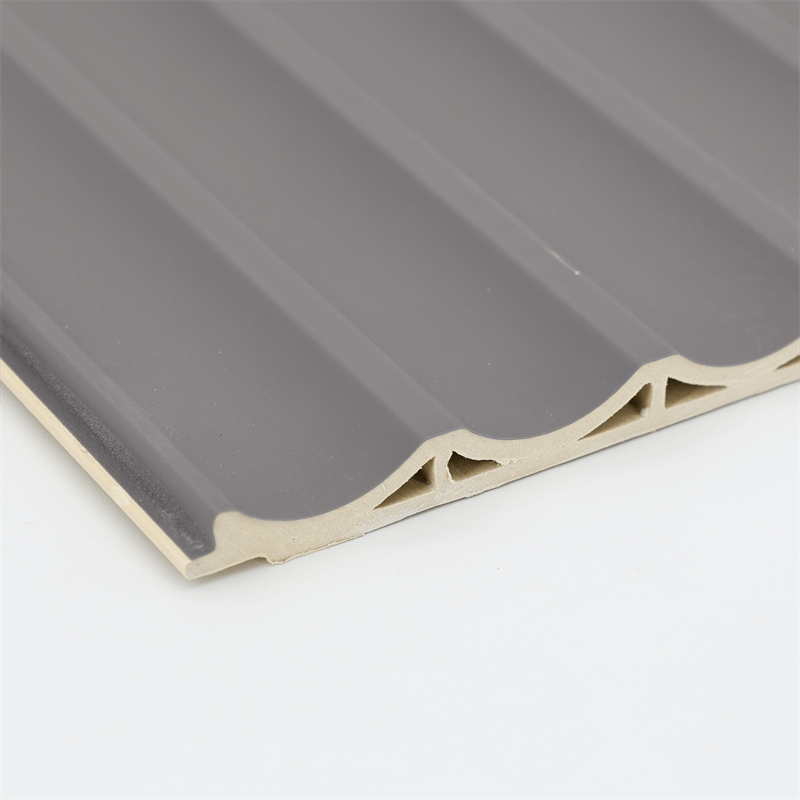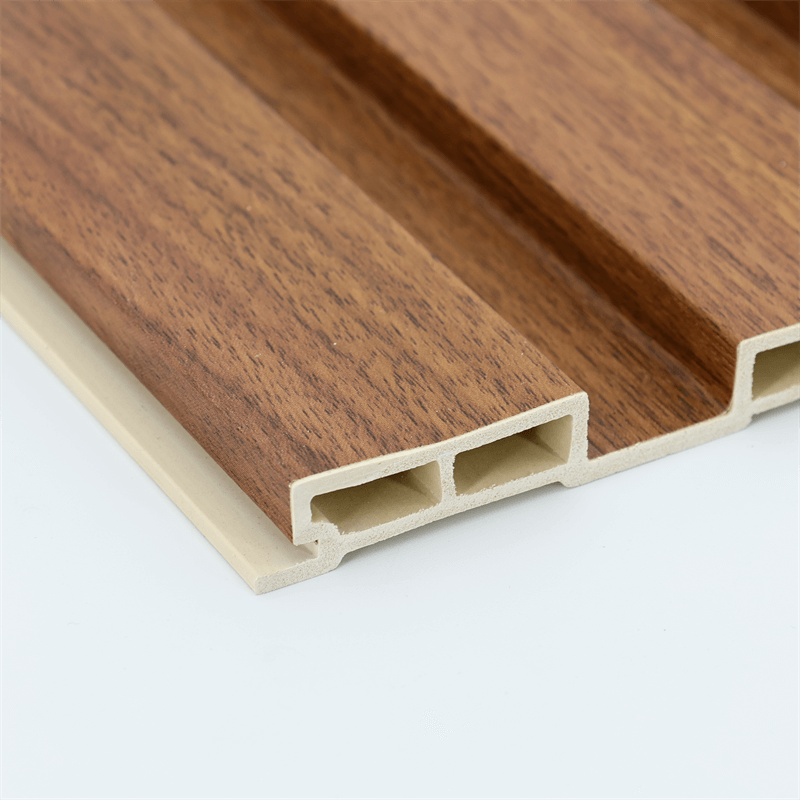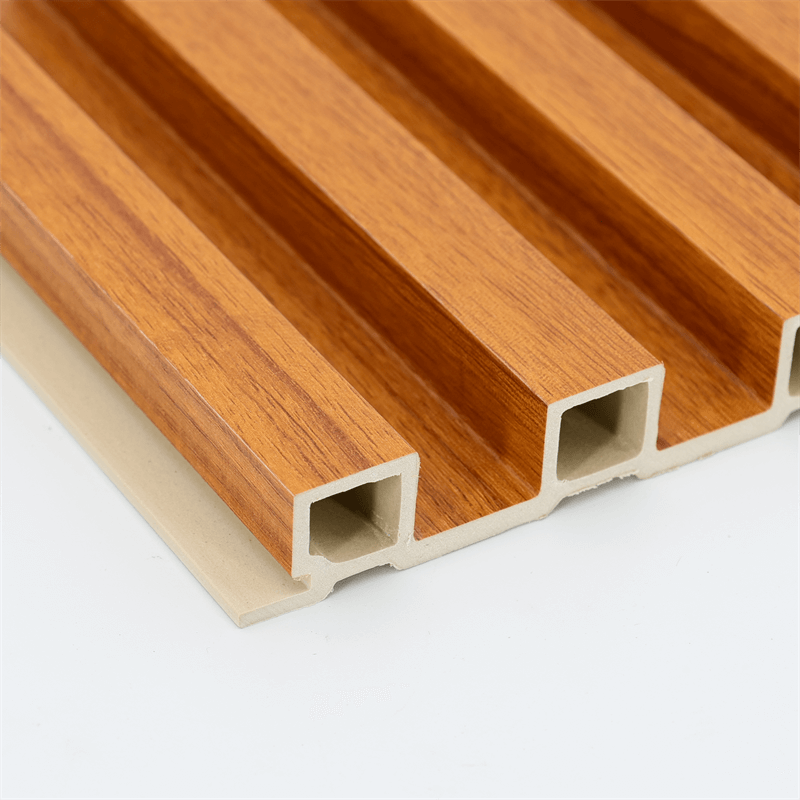In the realm of construction and interior design, durability and longevity are critical factors to consider when selecting materials.
WPC (Wood-Plastic Composite) wall panels have gained prominence due to their exceptional durability and long lifespan.
This essay delves into the characteristics that contribute to the longevity of WPC wall panels, exploring their composition, resistance to various environmental factors,
low maintenance requirements, and potential applications in both residential and commercial settings.
I. Composition and Structural Integrity:
- Wood Fiber and Thermoplastic Blend: WPC wall panels are composed of a combination of wood fibers and thermoplastics, typically polyethylene or polyvinyl chloride (PVC). The blend of these materials creates a composite that exhibits the best properties of both wood and plastic. The wood fibers provide strength, stability, and natural aesthetics, while the thermoplastic matrix enhances durability and resistance to environmental factors.
- Binding Agents: To ensure the cohesion and structural integrity of the panels, binding agents are used during the manufacturing process. These agents help create a homogeneous mixture, ensuring a strong bond between the wood fibers and thermoplastic matrix. This enhances the overall durability and longevity of the panels.
II. Resistance to Environmental Factors:
- Moisture Resistance: One of the key advantages of WPC wall panels is their exceptional resistance to moisture. Unlike natural wood, which is prone to rot, warping, and decay when exposed to water, WPC panels remain structurally stable and unaffected by moisture. This resistance makes them suitable for installation in moisture-prone areas such as bathrooms, kitchens, and outdoor applications.
- UV Resistance: WPC wall panels are designed to withstand prolonged exposure to sunlight without significant fading or degradation. The inclusion of UV stabilizers in the thermoplastic matrix helps prevent color fading and maintains the panels’ aesthetic appeal over time. This UV resistance makes WPC panels suitable for both indoor and outdoor installations.
- Impact Resistance: WPC wall panels exhibit excellent impact resistance, making them highly durable in high-traffic areas. They are less prone to dents, scratches, and other forms of surface damage compared to traditional wall materials such as drywall or gypsum board. This impact resistance ensures that the panels maintain their original appearance even in busy environments.
III. Low Maintenance Requirements:
- Easy Cleaning: WPC wall panels require minimal maintenance to keep them looking their best. The smooth and non-porous surface of the panels allows for easy cleaning with a damp cloth or mild detergent. Unlike natural wood, they do not require regular staining, painting, or sealing to maintain their appearance.
- Resistance to Mold and Mildew: Mold and mildew growth not only affects the aesthetic appeal of walls but also poses health risks. WPC wall panels are naturally resistant to mold and mildew, thanks to their moisture-resistant properties. This resistance eliminates the need for constant vigilance and maintenance to prevent fungal growth, contributing to their longevity.
IV. Potential Applications and Longevity:
- Residential Spaces: WPC wall panels find a wide range of applications in residential spaces, including living rooms, bedrooms, kitchens, and bathrooms. Their durability and resistance to moisture, impact, and surface damage make them ideal for creating long-lasting, low-maintenance wall surfaces that maintain their aesthetic appeal for years.
- Commercial Settings: WPC wall panels are also suitable for commercial applications, such as offices, hotels, restaurants, and retail stores. These spaces often experience high foot traffic and require durable materials that can withstand wear and tear. WPC panels offer a long-lasting solution that minimizes the need for frequent repairs or replacements.
- Outdoor Installations: WPC wall panels can be used for outdoor cladding, providing an attractive and durable alternative to traditional materials. Their resistance to moisture, UV radiation, and temperature variations ensures that they can withstand the elements and retain their structural integrity over extended periods.
WPC wall panels stand out as a durable and long-lasting option for both residential and commercial spaces.
Their composition, incorporating wood fibers and thermoplastics, ensures structural integrity and enhances their resistance to environmental factors such as moisture, UV radiation, and impacts.
With their low maintenance requirements and ability to withstand wear and tear, WPC panels offer a practical solution that retains its aesthetic appeal over time.
Whether used indoors or outdoors, in homes or commercial settings, WPC wall panels provide a durable and enduring design element that enhances the longevity of interior and exterior spaces.

In conclusion, the durability and longevity of WPC wall panels make them a reliable choice for various construction and design projects.
Their composition, combining wood fibers and thermoplastics, creates a composite material that exhibits the best properties of both wood and plastic.
This composition, along with the use of binding agents, ensures structural integrity and enhances the panels’ resistance to environmental factors.
The exceptional moisture resistance of WPC panels makes them suitable for installation in moisture-prone areas, while their UV resistance ensures they can withstand prolonged exposure to sunlight without significant fading or degradation.
Their impact resistance makes them highly durable in high-traffic areas, minimizing surface damage and maintaining their original appearance.
One of the notable advantages of WPC wall panels is their low maintenance requirements.
They can be easily cleaned with a damp cloth or mild detergent, and their resistance to mold and mildew eliminates the need for constant vigilance and maintenance to prevent fungal growth.
WPC panels find applications in both residential and commercial spaces, offering durable and long-lasting solutions.
They are suitable for various areas such as living rooms, bedrooms, kitchens, bathrooms, and even outdoor installations.
Their longevity ensures that the investment in WPC wall panels pays off over time, as they maintain their structural integrity and aesthetic appeal without the need for frequent repairs or replacements.
In a world where durability and longevity are essential considerations, WPC wall panels provide a reliable and versatile design solution.
Their ability to withstand environmental factors, low maintenance requirements, and potential for a wide range of applications make them an attractive choice for architects, designers, and homeowners alike.
By incorporating WPC wall panels into construction and design projects, one can create spaces that not only look visually appealing but also stand the test of time, providing lasting beauty and functionality.


